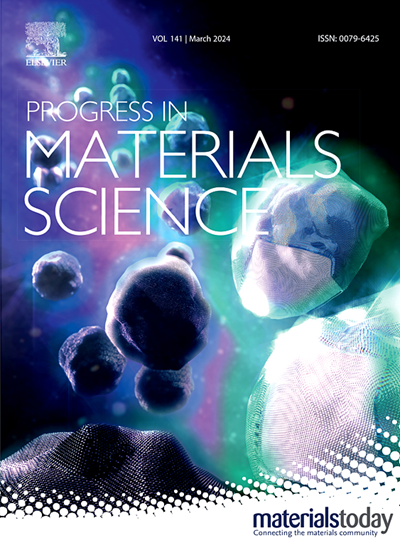耐碱纳滤膜:材料、机理、应用及展望
IF 40
1区 材料科学
Q1 MATERIALS SCIENCE, MULTIDISCIPLINARY
引用次数: 0
摘要
工业碱性溶液组成复杂,处理量大,对其净化和资源回收提出了重大挑战。纳滤技术为分离和净化碱性溶液提供了一种既有效又经济的方法。然而,传统NF膜的聚酰胺层在碱性环境中容易受到OH -离子的亲核攻击,导致性能随着时间的推移而下降。耐碱滤膜的最新进展已经证明在这种恶劣条件下可以稳定分离。尽管取得了这些进展,但对单体选择、设计原则、制备方法、工艺耦合、经济评价和应用要求的综合分析仍然不够充分,这在膜的设计、选择和应用中造成了混乱。本文全面综述了目前耐碱纳滤膜的材料和性能,深入探讨了耐碱的潜在机制。此外,综述了这些膜的制备技术和工业应用,同时强调了更广泛的应用需求。最后,概述了耐碱纳滤膜在材料升级和工艺优化方面面临的挑战和未来的研究方向。目的是提供有价值的见解,以指导该领域的进一步发展,为更有效和耐用的膜技术的分离,净化和碱性溶液的资源回收铺平道路。本文章由计算机程序翻译,如有差异,请以英文原文为准。
Alkali-resistant nanofiltration membranes: materials, mechanisms, applications, and perspectives
Industrial alkaline solutions, characterized by complex compositions and large treatment volumes, pose significant challenges for purification and resource recovery. Nanofiltration (NF) offers an effective and economically advantageous for separating and purifying alkaline solutions. However, the polyamide layer of traditional NF membranes is susceptible to nucleophilic attack by OH– ions in alkaline environments, causing performance degradation over time. Recent advancements in alkali-resistant NF membranes have demonstrated stable separation under such harsh conditions. Despite this progress, comprehensive analyses addressing monomer selection, design principles, preparation methods, process coupling, economic evaluation, and application requirements remain insufficiently addressed, creating confusion in membrane design, selection, and application. This paper provides a thorough overview of the materials and performance of current alkali-resistant NF membranes, delving into the underlying mechanisms of alkali resistance. Additionally, it summarizes the preparation techniques and industrial applications of these membranes, while also highlighting the broader application requirements. Finally, the paper outlines the challenges and future research directions of material upgrading and process optimization for alkali-resistant NF membranes. The goal is to provide valuable insights to guide further advancements in this field, paving the way for more efficient and durable membrane technologies for separation, purification and resource recovery of alkaline solutions.
求助全文
通过发布文献求助,成功后即可免费获取论文全文。
去求助
来源期刊

Progress in Materials Science
工程技术-材料科学:综合
CiteScore
59.60
自引率
0.80%
发文量
101
审稿时长
11.4 months
期刊介绍:
Progress in Materials Science is a journal that publishes authoritative and critical reviews of recent advances in the science of materials. The focus of the journal is on the fundamental aspects of materials science, particularly those concerning microstructure and nanostructure and their relationship to properties. Emphasis is also placed on the thermodynamics, kinetics, mechanisms, and modeling of processes within materials, as well as the understanding of material properties in engineering and other applications.
The journal welcomes reviews from authors who are active leaders in the field of materials science and have a strong scientific track record. Materials of interest include metallic, ceramic, polymeric, biological, medical, and composite materials in all forms.
Manuscripts submitted to Progress in Materials Science are generally longer than those found in other research journals. While the focus is on invited reviews, interested authors may submit a proposal for consideration. Non-invited manuscripts are required to be preceded by the submission of a proposal. Authors publishing in Progress in Materials Science have the option to publish their research via subscription or open access. Open access publication requires the author or research funder to meet a publication fee (APC).
Abstracting and indexing services for Progress in Materials Science include Current Contents, Science Citation Index Expanded, Materials Science Citation Index, Chemical Abstracts, Engineering Index, INSPEC, and Scopus.
 求助内容:
求助内容: 应助结果提醒方式:
应助结果提醒方式:


